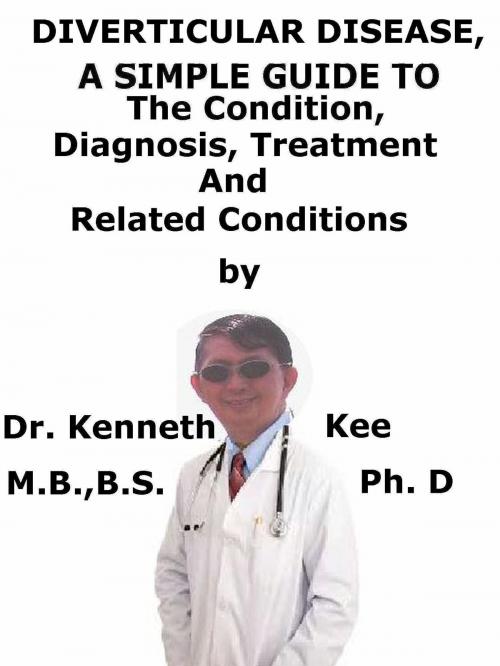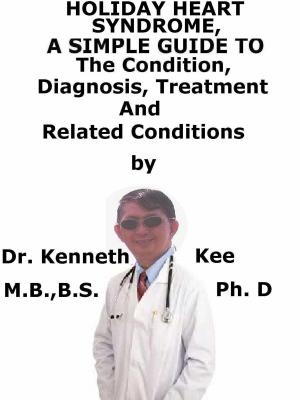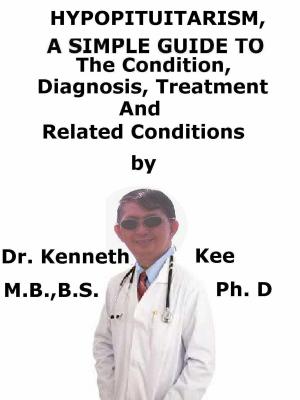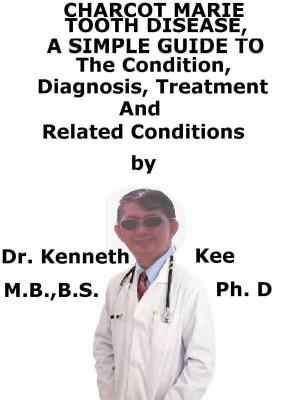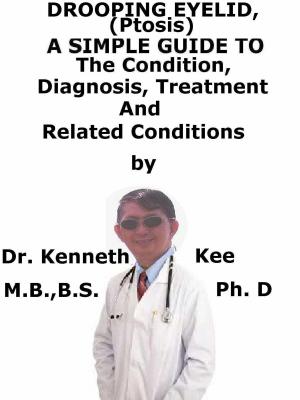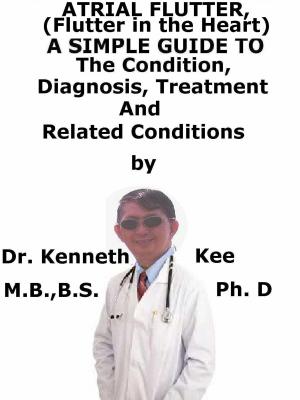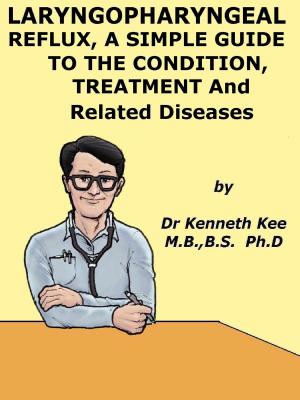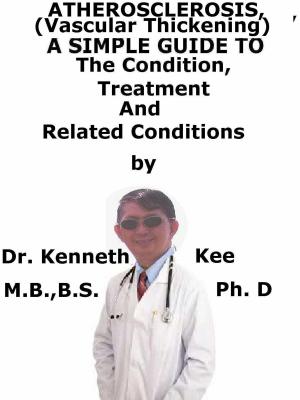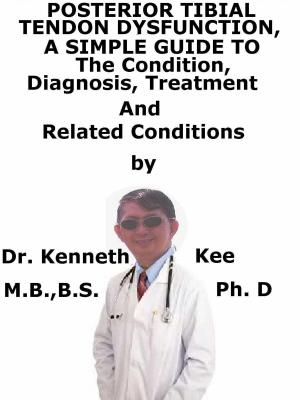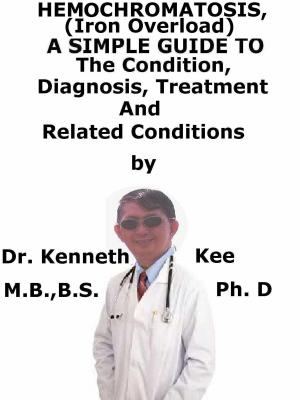Diverticular Disease, A Simple Guide To The Condition, Diagnosis, Treatment And Related Conditions
Nonfiction, Health & Well Being, Medical, Specialties, Internal Medicine, Gastroenterology, Health, Ailments & Diseases, Abdominal| Author: | Kenneth Kee | ISBN: | 9781370285952 |
| Publisher: | Kenneth Kee | Publication: | February 5, 2017 |
| Imprint: | Smashwords Edition | Language: | English |
| Author: | Kenneth Kee |
| ISBN: | 9781370285952 |
| Publisher: | Kenneth Kee |
| Publication: | February 5, 2017 |
| Imprint: | Smashwords Edition |
| Language: | English |
Diverticular disease is a medical disorder of the colon or large intestine where there are one or more sac-like diverticula (pouches) in the inner walls of the colon.
It is more common in the descending and sigmoid colon.
Diverticular disease affects the lining of the colon (large intestine) that removes waste from the body.
It is caused by small diverticula (pouches) that can form anywhere in the digestive tract, but usually forms in the last part of the large intestine (called the colon).
Diverticular disease is made up of two conditions:
1. Diverticulosis occurs when diverticula, called pouches form in the colon.
These diverticula bulge out like weak spots in a tire.
Most people who have diverticulosis do not have any symptoms and may not even know they have it.
2. Diverticulitis occurs if the pouches become inflamed and infected.
Some symptoms of diverticulitis can include severe abdominal pain, fever, nausea, constipation or diarrhea.
Less common symptoms are vomiting and frequent and painful urination.
Pain is most often located on the lower left quadrant of the abdomen.
Diverticulitis complications can include intestinal blockages and openings in the bowel wall
Diverticular disease is common in developed countries where low-fiber diets are common while it is infrequent in Asia and Africa where people eat high-fiber vegetable diets.
Diets with low fiber cause constipation which occurs when stools are hard and difficult to pass.
Constipation and hard stools increase the pressure in the bowel walls.
Fiber prevents constipation which can strain the muscles and raise the pressure in the colon.
The doctor may check the abdomen for tenderness and ask the patient about the bowel habits, diet and medications.
The doctor will place a gloved finger into the rectum to check for pain, bleeding, or a blockage.
Barium enema and CT scan will show the pouches in diverticular disease.
A colonoscopy can also detect pouches in the colon.
Treatment for diverticular disease depends on the severity of the disease and whether the patient is suffering from diverticulitis or diverticulosis.
For diverticulosis, the doctor may suggest that the patient eat more fiber, drink plenty of fluids and exercise regularly to help prevent the pouches from becoming inflamed or infected.
For mild cases of diverticulitis, the doctor may prescribe antibiotics.
He or she may also suggest that the patient eat more fiber, drink plenty of fluids and exercise regularly to help prevent future problems.
For severe cases of diverticulitis or diverticular bleeding, the patient may require surgery to excise the pouches and the damaged parts of the colon.
TABLE OF CONTENT
Introduction
Chapter 1 Diverticular Disease
Chapter 2 Causes
Chapter 3 Symptoms
Chapter 4 Diagnosis
Chapter 5 Treatment
Chapter 6 Prognosis
Chapter 7 Ulcerative Colitis
Chapter 8 Irritable Bowel Syndrome
Epilogue
Diverticular disease is a medical disorder of the colon or large intestine where there are one or more sac-like diverticula (pouches) in the inner walls of the colon.
It is more common in the descending and sigmoid colon.
Diverticular disease affects the lining of the colon (large intestine) that removes waste from the body.
It is caused by small diverticula (pouches) that can form anywhere in the digestive tract, but usually forms in the last part of the large intestine (called the colon).
Diverticular disease is made up of two conditions:
1. Diverticulosis occurs when diverticula, called pouches form in the colon.
These diverticula bulge out like weak spots in a tire.
Most people who have diverticulosis do not have any symptoms and may not even know they have it.
2. Diverticulitis occurs if the pouches become inflamed and infected.
Some symptoms of diverticulitis can include severe abdominal pain, fever, nausea, constipation or diarrhea.
Less common symptoms are vomiting and frequent and painful urination.
Pain is most often located on the lower left quadrant of the abdomen.
Diverticulitis complications can include intestinal blockages and openings in the bowel wall
Diverticular disease is common in developed countries where low-fiber diets are common while it is infrequent in Asia and Africa where people eat high-fiber vegetable diets.
Diets with low fiber cause constipation which occurs when stools are hard and difficult to pass.
Constipation and hard stools increase the pressure in the bowel walls.
Fiber prevents constipation which can strain the muscles and raise the pressure in the colon.
The doctor may check the abdomen for tenderness and ask the patient about the bowel habits, diet and medications.
The doctor will place a gloved finger into the rectum to check for pain, bleeding, or a blockage.
Barium enema and CT scan will show the pouches in diverticular disease.
A colonoscopy can also detect pouches in the colon.
Treatment for diverticular disease depends on the severity of the disease and whether the patient is suffering from diverticulitis or diverticulosis.
For diverticulosis, the doctor may suggest that the patient eat more fiber, drink plenty of fluids and exercise regularly to help prevent the pouches from becoming inflamed or infected.
For mild cases of diverticulitis, the doctor may prescribe antibiotics.
He or she may also suggest that the patient eat more fiber, drink plenty of fluids and exercise regularly to help prevent future problems.
For severe cases of diverticulitis or diverticular bleeding, the patient may require surgery to excise the pouches and the damaged parts of the colon.
TABLE OF CONTENT
Introduction
Chapter 1 Diverticular Disease
Chapter 2 Causes
Chapter 3 Symptoms
Chapter 4 Diagnosis
Chapter 5 Treatment
Chapter 6 Prognosis
Chapter 7 Ulcerative Colitis
Chapter 8 Irritable Bowel Syndrome
Epilogue
